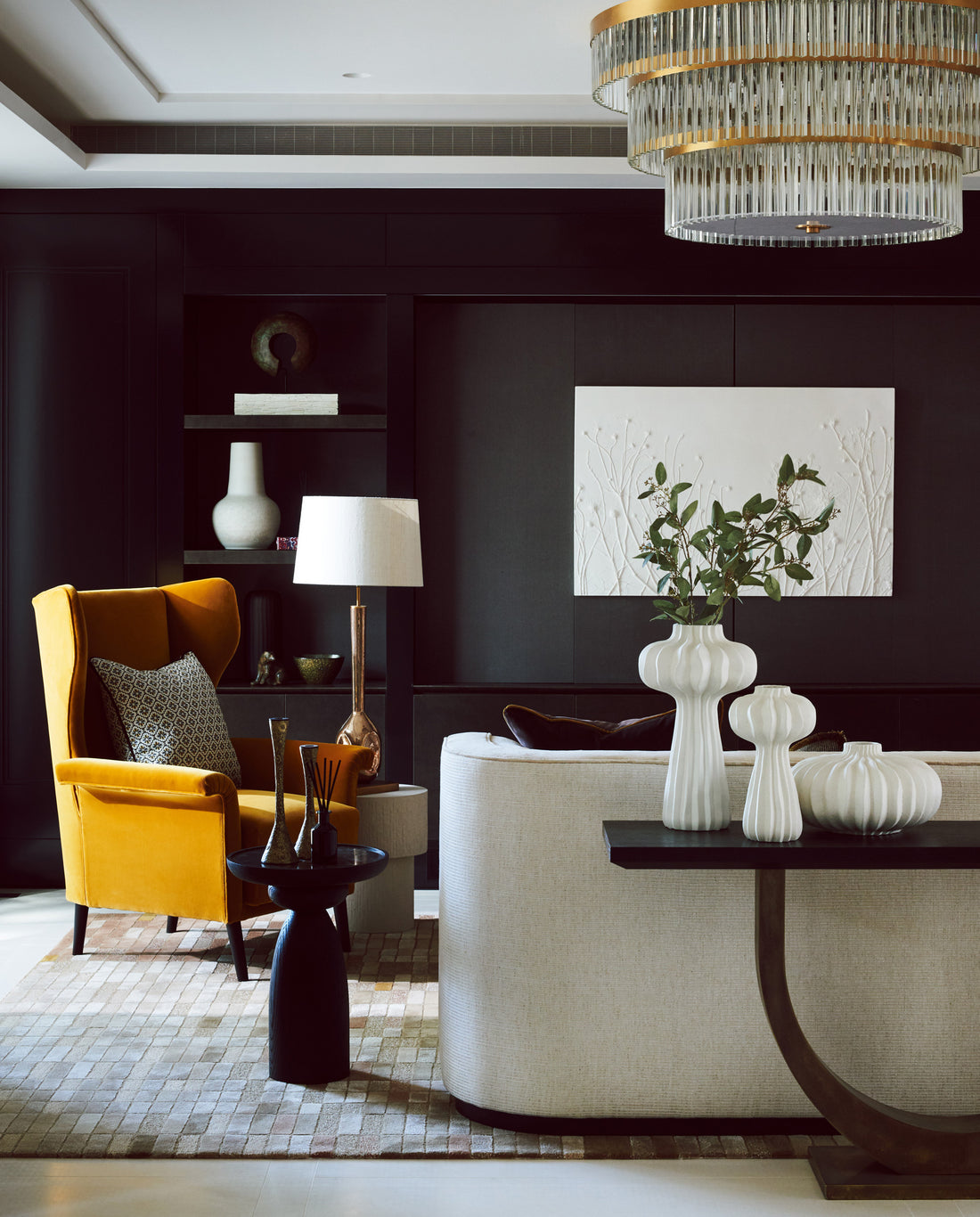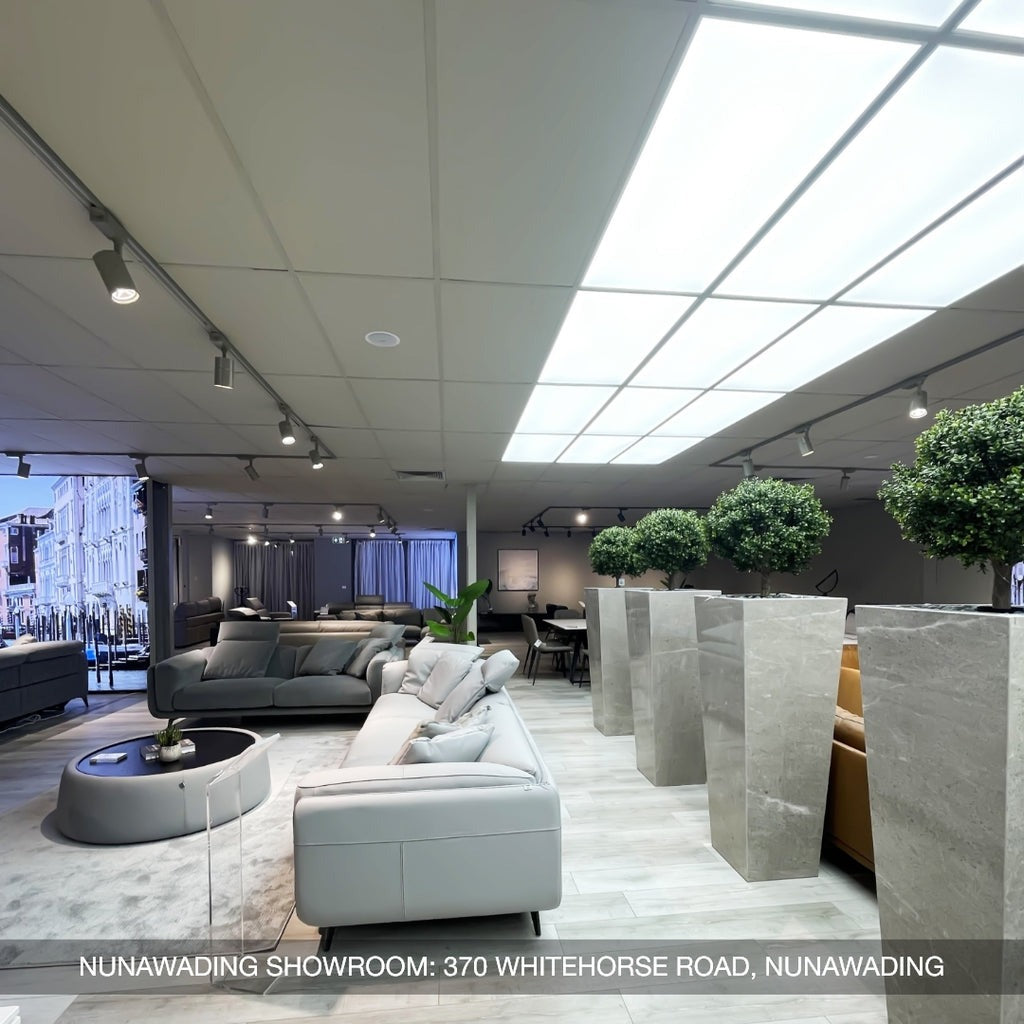The rule of thirds in interior design helps create balance by dividing a room into three equal parts, ensuring a harmonious look. The rule of 3 in interior design emphasizes grouping items in sets of three for an aesthetically pleasing arrangement. This technique brings a sense of completeness and sophistication to your decor. By following these principles, you can easily enhance the beauty and functionality of any room, making your home a true reflection of your personal style.
What Is The Rule Of 3
The rule of 3 interior design suggests that objects grouped in odd numbers, particularly threes, are more appealing, memorable, and effective than even-numbered groupings. Studies in psychology and design consistently show that our brains find odd-numbered groupings, especially sets of three, more engaging and aesthetically pleasing.
Core Concept:
- Odd-numbered groupings, such as three, five, or seven, naturally draw the eye and create a dynamic composition. This is because symmetry in even numbers can sometimes appear static and less engaging.
- Groups of three are particularly effective in interior design. They are small enough to be easily processed by the human eye and mind, yet large enough to create a recognizable pattern. This approach is especially useful for achieving a balanced furniture arrangement and for placing decor items like vases, candles, or picture frames.
Psychology Behind The Rule Of Three
Odd numbers, particularly groups of three, compel the eye to move around the grouping. This creates a natural sense of motion and engagement as the eye doesn't settle in one place but instead explores the composition. According to design experts, this movement helps in maintaining visual interest and avoiding stagnation.
Arrangements in odd numbers, such as the rule of three, generate a sense of visual interest and energy. This is because odd-numbered groupings prevent symmetry, which can often feel static or overly formal.
Odd numbers, especially the number three, feel more organic and less staged compared to even numbers. In nature, we often see elements in odd groupings—think of a trio of flowers or the branches of a tree. This natural occurrence makes odd-numbered groupings more comfortable and familiar to the human eye, thus enhancing the overall appeal of the design.

Applications In Interior Design
The Rule of 3 is a versatile principle that enhances the visual appeal of any space. From furniture arrangement to color selection, this guideline offers a framework for creating balanced and pleasing environments.
Decorative Objects
Arrange accessories in groups of three on surfaces like shelves, coffee tables, or mantels. By grouping items into threes, you create visual interest and balance.
Consider a side table with a tall vase, a medium-sized candle, and a small decorative box. This trio utilizes different heights and shapes, creating a dynamic display that adheres to the coffee table styling rule of using varied textures and forms to add depth to your decor.
Furniture Arrangement
Create seating areas with three main pieces. This strategy, often referred to as design element grouping, helps in establishing a focal point and facilitating conversation. The triangle configuration is particularly effective for encouraging social interaction and maintaining a comfortable flow within the space.
A classic arrangement might include a sofa flanked by two armchairs in a living room. This setup not only ensures ample seating but also promotes balance and symmetry, key components in effective interior design.
Color Schemes
Use three main colors in a room's palette. The rule of 3 in interior design helps in creating a cohesive and visually appealing environment. Selecting 60-30-10 color rules with a primary color, a secondary color, and an accent color can unify a space and provide a structured yet vibrant aesthetic.
For a bedroom, you might choose navy blue, white, and gold. Navy blue can serve as the dominant hue, white as a complementary neutral, and gold as a bright accent, adding elegance and warmth.
Lighting
Incorporate three types or levels of lighting in a room. Following the design element grouping approach, integrating ambient, task, and accent lighting ensures a well-lit and functional space.
In a home office, you might use overhead lighting for general illumination, task lighting for focused activities like reading or writing, and accent lighting to highlight decorative elements or architectural features.
Artwork
Hang artwork in groups of three or use triptychs. The rule of 3 in interior design is particularly effective in art displays because it naturally draws the eye and creates a balanced visual rhythm. Grouping art in threes, whether identical or related pieces, provides a cohesive look that enhances the overall aesthetic of a space.
Imagine three similarly framed prints hung in a row above a sofa. This arrangement not only fills the wall space appropriately but also creates a harmonious focal point.
Textiles
Layer three different textures in soft furnishings. Utilizing the rule of 3 in interior design in textiles can add depth and tactile interest to a room.
Consider a leather sofa adorned with wool throw pillows and a silk throw blanket. The leather provides a smooth, sleek base, the wool introduces warmth and coziness, and the silk adds a touch of luxury. This trio of textures offer a sophisticated and comfortable look through layered textiles.
Visual Weight
Balance a room with three focal points of varying visual weight. By distributing attention across three key elements, you ensure that no single piece overwhelms the room, fostering a sense of balance and harmony.
In a living room, you might balance visual weight with a fireplace, a large piece of art, and a statement chair. The fireplace serves as a natural focal point, the artwork draws the eye with its size and presence, and the statement chair adds interest and completes the triad.
Architectural Elements
Highlight or create three main architectural features in a space. The rule of 3 in interior design can also apply to architectural details, helping to define and enhance the character of a room.
In a room, you might highlight a bay window, a coffered ceiling, and French doors. Each of these elements contributes its unique architectural interest, and together they form a cohesive design statement.

Breaking The Rule
While the Rule of 3 is powerful, true design mastery involves knowing when to break it. Let's explore how deviating from this principle can lead to innovative and compelling designs.
Rule Of Odd Numbers
- The traditional rule of odd numbers in design suggests that groups of three are more visually appealing. However, this rule can be extended to other odd numbers like five or seven. For instance, in larger spaces or more complex designs, using groups of five or seven can create a balanced and harmonious look.
- Larger spaces or intricate designs benefit from using higher odd numbers. A living room with an expansive wall can look more aesthetically pleasing with a set of five or seven art pieces instead of three. This technique breaks the monotony and adds depth to the design.
Grouping By Height
- Traditionally, grouping items by height means placing the tallest in the middle and shorter items on the sides. Breaking this rule by arranging items in descending height order can create a more natural visual flow. This method draws the viewer’s eye smoothly from one item to the next, mimicking natural landscapes and leading to a more comfortable viewing experience.
- A descending height arrangement offers a structured yet relaxed visual experience. This method can be particularly effective in creating focal points within a room. Visual studies suggest that our eyes naturally follow lines and progression, making descending height arrangements both intuitive and aesthetically pleasing.
Asymmetrical Balance
- Asymmetrical balance involves creating a visual equilibrium without mirroring elements on either side of a central line. By using the rule of three, designers can achieve intentional asymmetry that adds dynamic interest to a space.
- Intentional asymmetry can transform a static room into a dynamic space full of visual interest. This approach encourages exploration and can make areas feel more lively and personalized.
Tips For Effective Implementation
These practical tips will help you elevate your use of this principle from basic application to artful implementation in real-world settings.
- When arranging items in a group, consider their proportions relative to each other and the overall space. Items should complement one another in size and scale to create a harmonious look.
- A unifying element can be color, material, or theme that ties grouped items together. This cohesion helps the group appear as a deliberate arrangement rather than a random collection of objects.
- Providing adequate space around grouped items prevents the arrangement from looking cluttered. Breathing room enhances the visibility of each item and makes the grouping more effective. Design professionals recommend leaving enough space between objects to let each piece stand out while contributing to the overall group.
- While aesthetics are important, the functionality of grouped items should not be overlooked. Items should serve a purpose or contribute to the usability of the space. Functional groupings enhance both the utility and beauty of a space, making it more enjoyable and convenient to use.
- Repeating the rule of three throughout a room or home can create a cohesive and unified look. This repetition can be achieved through decor, furniture arrangement, or even architectural elements. Consistent application of this rule helps establish a visual rhythm, making the space feel more organized and intentional.
- There are situations where even numbers or larger groupings might be more effective. For instance, symmetrical arrangements often benefit from even numbers, creating a balanced and formal look. Similarly, larger groupings can fill extensive spaces more appropriately, preventing the area from appearing sparse.
- The rule of three should serve as a guideline rather than a strict law. Creativity and personal preference play significant roles in design, and rigid adherence to any rule can stifle innovation. Experimenting with different arrangements and breaking the rule when necessary can lead to unique and personalized spaces.

Combining With Other Design Principles
The golden ratio, approximately 1:1.618, is a mathematical ratio found in nature and art, believed to create aesthetically pleasing compositions. Applying this ratio alongside the rule of three can help achieve balanced and visually appealing proportions in various elements, from furniture placement to architectural features.
Color theory involves understanding how colors interact and complement each other. Using a triadic color scheme, which involves three colors evenly spaced on the color wheel, can create vibrant and balanced compositions.
The concept of visual triangles involves arranging elements in a triangular pattern to create a balanced and dynamic composition. By using the rule of three to form visual triangles, designers can guide the viewer's eye through the space in a natural and engaging way. This technique is commonly used in photography and art to create depth and interest. In interior design, placing furniture or decor items in triangular formations can enhance the flow and visual appeal of a room.
Conclusion
The rule of 3 in interior design is a powerful tool for creating visually appealing and harmonious spaces. By grouping items in threes, you can achieve a balanced and dynamic look that feels natural to the eye.
To explore more options and ideas for your living room, visit COZY and discover how you can transform your space into a stylish and comfortable haven.





